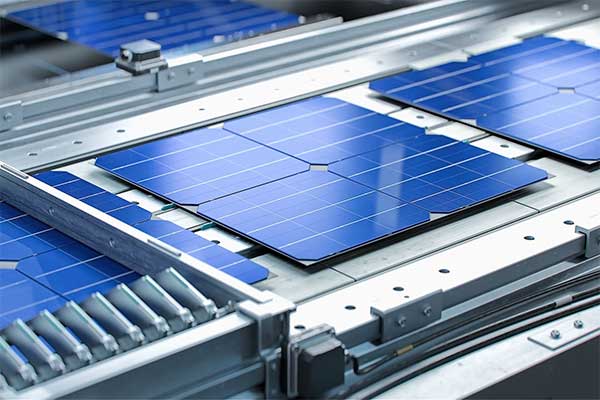Enel North America, an Italian company, has announced its plans to construct a $1 billion solar factory in Inola, Oklahoma. The factory, operated by Enel’s affiliate 3Sun USA, will commence production of solar panels and cells in 2024, with a capacity of up to 3 gigawatts (GW).
In subsequent years, the capacity is expected to increase to 6 GW.
This facility could potentially be one of the first in the United States to manufacture crystalline silicon solar cells, a crucial component of solar panels that has not been produced commercially in the country for several years. The decision signifies a shift in the way solar panels are manufactured in the United States and comes at a time when the industry faces important trade and financial decisions from the Biden administration that could impact its future.
According to the Solar Energy Industries Association, since the passage of the Inflation Reduction Act, manufacturers have announced the development of new factories with a combined solar panel capacity of over 56 GW. This is approximately ten times the current production capacity in the United States, as estimated by the National Renewable Energy Laboratory.
Giovanni Bertolino, the head of 3Sun USA, expressed his excitement about the announcement, stating that it represents a significant advancement in the establishment of a cutting-edge PV factory and positions Oklahoma at the forefront of renewable energy manufacturing.
President Joe Biden applauded Enel’s plans, hailing them as evidence of the success of his Investing in America agenda and the resurgence of American manufacturing. The president credited the Inflation Reduction Act for attracting private investment in Oklahoma and across the nation, leading to the development of the clean energy economy.
However, the solar industry is currently facing several challenges. In August, the Commerce Department is expected to decide whether to extend tariffs on Chinese solar imports to products made in four Southeast Asian countries. This possibility has been criticized by solar developers, who believe it would impede industry growth. Additionally, House Republicans recently voted to raise the debt ceiling as part of a measure that would eliminate billions of dollars in clean energy tax breaks. Although the bill is unlikely to pass the Senate, it reflects the headwinds faced by the solar industry.
The American Clean Power Association reported a decline in clean energy installations, including utility solar, for the first time in five years. In 2022, utility-scale solar installations decreased by 31 percent due to the Commerce Department’s investigation and customs officials detaining solar imports to verify that they were not produced using forced labor.
The Department of Energy recognizes solar power as a crucial resource in achieving the Biden administration’s climate goals. To decarbonize the grid by 2035, the United States will need to deploy approximately 760 to 1,000 GW of solar capacity, significantly surpassing the current 142 GW of solar capacity online.
Enel’s new factory could significantly contribute to the domestic production of solar panels. In 2022, the United States produced around 5 GW of photovoltaic panels, which is less than the planned annual capacity of 6 GW for Enel’s Oklahoma facility.
Enel’s decision to aim for a higher annual capacity was influenced by the passage of the Inflation Reduction Act. The company intends to pursue the 45X advanced manufacturing production tax credit for panels and cells manufactured at the Oklahoma factory. The Inflation Reduction Act offers a 10 percent bonus for projects that utilize U.S.-made equipment, but it is unclear if this bonus would be applicable to developers purchasing panels from Enel’s factory.
Enel is currently evaluating the guidance released by the Treasury Department regarding the eligibility criteria for the production tax credit and bonus outlined in the Inflation Reduction Act.














Comments